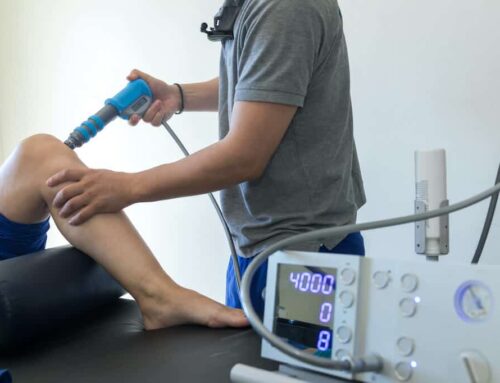
Hello, I’m Dr. Tom Padilla, owner of the doctors of physical therapy located in Scottsdale, Arizona. And today I am excited to be talking about diagnosis, the diagnosis best practices, and how someone as a consumer can tell when they are getting a good diagnosis and when they’re not. (You can also listen to this post on our podcast episode, “How Diagnosing Works.”
When making a diagnosis, there are important steps to follow to ensure a patient is actually getting an accurate diagnosis. There’s a saying among carpenters that goes, “Measure twice, cut once.” This saying is even more important when diagnosing.
Without the correct diagnosis, there’s no way to apply the correct treatment. And without the right treatment, you’re definitely not getting the results you want. So I think that there’s a lot of room for improvement and just education on how to actually tell when a diagnosis is accurate, and how to get a diagnosis where we have left no stone unturned.
Different Kinds of Diagnoses
There are a couple of key practices when it comes to diagnosis. One is called differential diagnosis. The other is called diagnosis by exclusion. When you go to the doctor’s office and they interview you about your pain or whatever is going on, they’re collecting what’s called subjective data and looking for hints as to what causes your pain, what makes it worse, and what makes it better.
A lot of the time, there are clues in how your pain behaves. Being able to give your doctor accurate information about the things that make your pain worse or make your pain better is extremely important.
For example, one of the most common things that is seen in the physical therapy world is sciatic pain. There is a big difference between sciatic pain that is aggravated when you’re sitting and slouched over versus sciatic pain that’s aggravated when you’re standing and bending backwards. Just that simple statement can help a doctor understand what tissue sources might actually be causing your pain.
Now we’re talking about tissue source with this diagnostic criteria, not about root cause diagnosis. You’ll hear me talk about this on the podcast from time to time.
There are two diagnoses that you should be getting.
- Which tissue is causing your pain or dysfunction,
- Why the tissue is causing your pain or dysfunction.
A simple example might be that a joint is causing you pain. Next to figure out is why. Is it because there are muscles that are supposed to be stabilizing the joint that aren’t doing a good job? So the big powerful muscles are doing extra work, which is causing the joint to actually become compressed? It’s important to know that yes, this is the joint that’s having the issue. But also, this is the diagnosis for the root cause, which is why, because we could address the joint and leave it at that and you’ll feel better for a little while. But we also need to be able to diagnose the root cause.
What is Differential Diagnosis?
But back to differential diagnosis. So you’ve told the doctor what your symptoms are, and they’ve already started to get a list of things in their head that are either more or less likely. From there, you’re going into what’s called an objective examination. So we should be putting you through ranges and strength testing and getting a bunch of data to see how you functionally move. We might ask you to squat or stand on one leg and just kind of see how your body and brain are interpreting movement and administering movements with the objective of just moving through space or lifting objects, etc.
Once we have our subjective and objective data, we’re now putting together a picture and we should have a list of 3, 4, 5, 6 different things in our head. And what we then are doing, or should be doing, is trying to exclude other diagnoses.
When it comes to differential diagnosis, that is where two things might be very similar, but there are some key characteristics that make them different. And that enables us to say, well, this pattern is much more likely than that pattern because of these characteristics. So I’m able to differentiate between the two.
Differential Diagnosis vs. Diagnosis by Exclusion
Diagnosis by exclusion is something that’s a little bit further along when a doctor is diagnosing by an exclusion which is what we practice. We diagnose and figure out what it is by figuring out what it’s not. The idea is that the more things that you can check off the list, as in, it’s not this, it’s not this, it’s not that it’s not this, then you get closer and closer to finding out what it actually is.
It’s kind of like you’re taking a standardized test, and you’ve got four answers on the test, you can tell by the question, that it’s not answer D, and it’s not answer B, which leaves you with A and C. From there, you can differentiate between A and C based on some characteristics of past experiences, etc. But you need to be able to exclude those B and D answers to confidently say, okay, we’ve got a 50-50 shot between A and C. Best case scenario, you know the answer because you can say it’s not B, it’s not C, and it’s not D. So the answer is A, and that is diagnosis by exclusion.
When The Imaging Misleads Diagnoses
A lot of research has come out that has demonstrated that there’s sometimes minimal to no correlation between a patient’s imaging and their presentation. To give you an example, most people have bulging discs, okay. Now, if an individual with back pain gets an MRI, they are going to show up with bulging discs, a lot of the time, they’re going to be told oh, it’s the bulging disc that’s causing your back pain. And this is simply not true. There are hundreds of 1000s of people walking around with bulging discs without having pain.
Just because it shows up on an MRI or any other type of image does not mean that that is what’s causing your pain, because you haven’t excluded everything else. Now, if you exclude everything else that could be causing your type of back pain, and you have an image that says it and your presentation pattern matches the pattern that we would see on a bulging disc, then we can accurately conclude that there’s a very high likelihood that you have pain as a result of that bulging disc.
Again, that’s just going to be your tissue source diagnosis. That doesn’t get into why your disc is bulging in the first place, which is the one true way to make sure that when you do solve this problem, it doesn’t come back.
To figure out why that might be, check out my podcast with Dr. Joe Armour Smith, where we really get into identifying the root cause of pain and dysfunction.
Diagnosing the Root Cause
Diagnosing the cause of the pain is important for a lot of reasons. For example, let’s say someone comes to us saying that they have sciatica. They say that, yes, the pain is along the outside of the hip and down the knee. That could be nerve pain that comes from a segment in the spine. It could also be pain from a bursa in your hip, pain from a set or a joint in your spine, an issue with your SI joint, etc. You get the picture. There are several things that could actually cause pain in that pattern or in that area.
Now, if that individual has an MRI that says that they have a bulging disc at a certain level, and someone concludes that that correlates with the pattern. Without ruling out those other things, this individual may be given treatment for the bulging disc but that is not the correct diagnosis. And that’s where people get caught in this position of, “Well, I’ve tried everything for this.” Because they might be holding on to the initial diagnosis that they’ve been given, which might not be correct if we didn’t rule out the other things.
How To Get An Accurate Diagnosis
To know if you have received an accurate diagnosis, ask the doctor what their thought process is. Find out what other things it could be and what they’ve been able to rule out. And there should be an answer for what we’re able to rule out: “Well, we can rule out this and we can rule out that because it doesn’t match your presentation pattern. And it would hurt when you do X, Y or Z. And that’s why we can rule that out. And we did some tests for this other thing that might have been on the list. And we can rule that out because of this.”
It can be a tough place because as a patient, sometimes we’re looking for something to blame it on where every test that we do, we’re hoping that it leads us to a straight-forward answer. So it can create a kind of pressure on doctors to provide an answer.
However, what we need to do as doctors is make sure that our diagnosis matches the clinical presentation and that we’ve ruled everything else out. We need to be able to rule enough possibilities out that we can effectively use differential diagnosis with the remaining possibilities. We should be able to tease out whatever it is that you’re saying with the way it’s presenting and run you through physical testing to make it all match up.
A Changing Diagnosis
That way, we’re measuring twice and cutting once. We’re only progressing with the treatment path that is the highest likelihood of actually producing results. Now, the crazy thing with the body is that as you progress through a treatment process, your diagnosis might change a little bit. The thing that causes pain in that lateral hip might have at first been the bursa. But you might find that it was also caused by a joint in your back, too. So you need a practitioner who’s able to see that and be able to change the treatment process as it so fits.
Because there are even overlapping pain patterns that come from the same root cause, but you have different tissue sources that are causing the pain in that same area. The long and short of it is that diagnosing should be done with the teamwork of both the patient and the practitioner. It needs to feel like the doctor is asking good detailed questions. And you need to be able to deliver good detailed answers about what hurts and what doesn’t hurt.
We also need to know what the responses to each intervention is in the first 24 hours and 48 hours. If there’s anything that has happened in between interventions, like going and playing baseball or hiking three times as long as you typically do, that would skew us being able to see whether or not the treatment was in fact the correct direction.
What Your Doctor Needs to Know When Diagnosing
When it comes to diagnosing complex pain type issues where people have had pain for a long period of time, and they’ve been to several other practitioners, what it comes down to is being able to A) diagnose the tissue sores that is currently causing your pain, B) diagnose the root cause be able to differentiate between which diagnoses are correct, and then C) also have the awareness that the diagnosis might change over time. And those changing pain patterns are a good thing. So I hope you learned a little bit about diagnosis today.
If you liked today’s blog and you found it helpful, make sure you share it with a friend. You can find more helpful information on the DPT podcast, UnCut. Again, this is Dr. Tom with the doctors of physical therapy located in Scottsdale, Arizona. Until next time, get out there and live life today.






